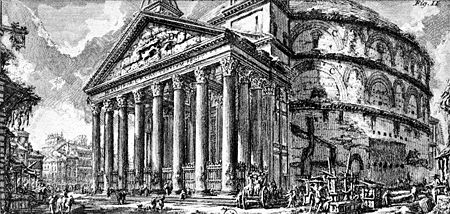
On April 25, the exhibition “The Arts of Piranesi” opened at the Caixaforum, Madrid, and it will be open until September 9.
The exhibition offers to the public a tour of the history of Piranesi through more than 300 original engravings by the artist. This, together with the additional representations of photographs, illustrations and an audio-visual approach will allow the work of this Italian master to be opened up to the public.
The exhibition includes real reproductions in various materials of the furniture and decorative pieces from his series Antichità Romane, an intense, disturbing visual that gives depth and dimension to their Prisons of the Imagination and contemporary photographs of G. Basilico for his collection of engravings of Views of Rome. Some comparisons allow the public to discover the three-dimensional, perspective and detail of the engravings of Piranesi (https://obrasocial.lacaixa.es/nuestroscentros/caixaforummadrid/lasartesdepiranesi_es.html).
The views in three dimensions (including, for example, a video where we “are” in a prison designed by him) were made by the Spanish study Factum Arte (https://www.youtube.com/watch?v=NAUgcTDkVG8)
Personally, I consider Piranesi one of the kings of drawing and engraving. It seems that you are within those buildings when you see them on paper – above all, I would say, in prisons: enclosed spaces without ventilation, cold … and this just an engraving! Piranesi may be limited to drawing because his architecture would have given everyone the willies.
It was high time that there was a great exhibition about this artist. Giovanni Battista Piranesi (Venice, 1720 -Rome, 1778) was an architect, engraver and researcher. He always considered himself as an architect, but he never actually exercised as such. He made more than 2000 engravings in his lifetime.
In Venice, he studied Architecture with his uncle, and he did etchings of works of Vitruvio and Palladio.
He went to Rome in 1740, and when he discovered the Roman ruins, his inspiration did all the rest. He learned some different etching techniques with Giuseppe Vasi and in 1743 he published Prima parte di Architettura e Prospettiva, his first series of engravings.
He even opened an engraving studio inRome.
In 1778, he was buried in Santa Maria del Priorato, the only architectural work that he did.
Many of Piranesi’s engravings became souvenirs of the Grand Tour, and books of prints were exported quickly to England.
If you can’t see the exhibition in Madrid, I invite everyone to “snoop” on Piranesi’s work; you won’t be wasting your time. I leave you with this link to get you started: https://www.metmuseum.org/toah/hd/pira/hd_pira.htm

Leave a Reply